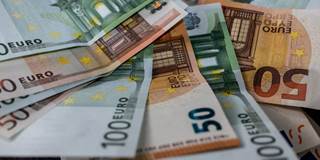The euro’s first 20 years played out very differently than many expected, highlighting the importance of recognizing that the future is likely to be different from the past. Given this, only a commitment to flexibility and a willingness to rise to new challenges will ensure the common currency’s continued success.
BRUSSELS – Twenty years ago this month, the euro was born. For ordinary citizens, little changed until cash euros were introduced in 2002. But in January 1999, the “third stage” of Economic and Monetary Union officially started, with the exchange rates among the original 11 eurozone member states “irrevocably” fixed, and authority over their monetary policy transferred to the new European Central Bank. What has unfolded since then holds important lessons for the future.
In 1999, conventional wisdom held that Germany would incur the biggest losses from the euro’s introduction. Beyond the risk that the ECB would not be as tough on inflation as the Bundesbank had been, the Deutsche Mark was overvalued, with Germany running a current-account deficit. Fixing the exchange rate at that level, it was believed, would pose a severe challenge to the competitiveness of German industry.
Yet, 20 years on, inflation is even lower than it was when the Bundesbank was in charge, and Germany maintains persistently large current-account surpluses, which are viewed as evidence that German industry is too competitive. This brings us to the first lesson of the last 20 years: the performance of individual eurozone countries is not preordained.

BRUSSELS – Twenty years ago this month, the euro was born. For ordinary citizens, little changed until cash euros were introduced in 2002. But in January 1999, the “third stage” of Economic and Monetary Union officially started, with the exchange rates among the original 11 eurozone member states “irrevocably” fixed, and authority over their monetary policy transferred to the new European Central Bank. What has unfolded since then holds important lessons for the future.
In 1999, conventional wisdom held that Germany would incur the biggest losses from the euro’s introduction. Beyond the risk that the ECB would not be as tough on inflation as the Bundesbank had been, the Deutsche Mark was overvalued, with Germany running a current-account deficit. Fixing the exchange rate at that level, it was believed, would pose a severe challenge to the competitiveness of German industry.
Yet, 20 years on, inflation is even lower than it was when the Bundesbank was in charge, and Germany maintains persistently large current-account surpluses, which are viewed as evidence that German industry is too competitive. This brings us to the first lesson of the last 20 years: the performance of individual eurozone countries is not preordained.